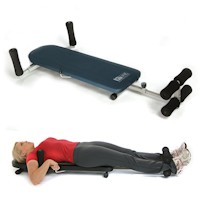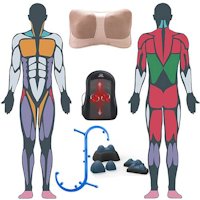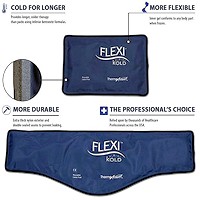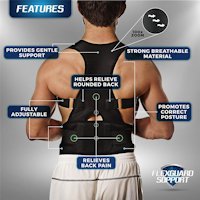Back Disability Can Change Your Entire Life – Online Form To Determine Disability Rating
Lower back pain isn’t just a frequent issue, but may result in disability. It becomes an essential cause associated with activities of daily living as well as decline in the workforce.
Back pain can impact those typical activities involving everyday living resulting in medical expenses and reduces the capability to work productively. It is essential to produce an analysis of the degree of self rated impairment and this particular disability form may help.

This form is based on a commonly used back disability questionnaire. The basis of the questionnaire is to determine a baseline score or reference from the 24 questions. The scoring is then used to determine a place whereby disability progression or regression can be determined throughout a course of time.
This particular disability questionnaire was established to assist in understanding just how back pain affects ones capability to handle day-to-day activities. Whenever your lower back is painful, you might find it challenging to be able to perform things you typically do. Simply indicate yes when it identifies your situation at this time. In the event that it really does, tag “YES”, otherwise, indicate “NO”.
After answering ALL of the questions, click on the ‘Score‘ button and a new window will open up with the Disability Score along with an interpretation based on a division of scoring. You may return at a later date to see if your score has improved or is getting worse.
This Online Questionnaire is really a way of measuring that’s made to be performed by individuals in evaluation regarding disability directly associated with lower back pain. Intended for utilization in research being an outcome measure regarding scientific studies, it’s been beneficial in order to keep track of individuals within a clinical environment.
The back disability score you get from the online form is based on the 24 item questionnaire, it is not meant to provide a descriptive account of disability status. It is pertinent for observing short-term changes in back pain status – resolution or worsening of symptoms of patients seen in a clinical settings as well as responses to treatment(s). The scores range from 0 (no disability) to 24 (maximum disability). In this online form, the scores are weighted by division into 6 categories.
It is important for progress and responses to treatments, but also gives one an idea of areas of focus. You may not realize the impact back pain has on your life, particularly around the house and as it relates to others. Helping to understand the way your back pain condition affects you and others can help reduce anxiety and suggest some helpful strategies.
A 2021 study in Chiropractic & Manual Therapies found weekly self monitoring of low back pain was helpful as part of self management.
A 2019 study in the journal Cytokine noted correlating factors often found with low back pain, like obesity and sarcopenia (loss of skeletal muscle mass) with citokines. The authors ivestigated plasma level cytokines of 1078 individuals. Cytokines are chemical immune system messengers that, when elevated, contribute to arthritis and other inflammatory conditions.
They found among all investigated, GDF-15 (Growth and differentiation factor 15) was significantly associated with low back pain associated disability. The authors indicate this could be a therapeutic target for prevention and/or treatment. Further studies should elucidate these assumptions, as well as a possible objective measure of disability.
A 2019 study in the journal Pain Medicine found that the level of back disability was associated with an increased risk of serious falls in a population of community living older adults. Fall prevention should be discussed with your doctor if you have disability related to back pain. Occupational therapists can be a good source for individualized help.
A 2020 study in the Journal of Back and Musculoskeletal Rehabilitation found patients with lumbar spine lesions, the disability score was associated with age, BMI, work factors, smoking, and the type of disorder. Regular exercise was associated with lower levels of disability.
A 2020 study in the Spine Journal found that persistent, severe low back pain and disability is often associated with psychological risk factors, in particular catastrophization and depression.
Catastrophization
Catastrophization is when one assumes the worst will happen or believing that you are in a worse situation than may be or exaggerating the difficulties you face. For example, if you are worried that you will fail an exam, you may feel you are a bad student, will never pass, get a degree or a job.
It often is not intentional and people often do not even realize they are doing it. There may be a feeling of no control over worrying, and this can make things worse.
A 2009 study in Expert Review of Neurotherapeutics indicates it with chronic pain, catastrophization may be related to alterations in the hypothalamus and pituitary responses, and increased activity in the parts of the brain that register emotions associated with pain. Catastrophizing is not the same as just pain exaggeration. It is more than just psychological, it affects the physiology of the brain and should not be taken lightly.
Someone with chronic pain may conclude that they will never get better and will always feel discomfort and have disability. This fear may lead them to altered behavior. Coupled with depression, anxiety, and fatigue may also contribute to catastrophization. This is often a problem in managing whiplash.
A 2013 study in the Journal of Psychosomatic Research found a link with fatigue and that catastrophizing can make fatigue worse. This relates to pain and sleep quality as well.
A 2018 study in Health Psychology Open found mindfulness might help you recognize which thoughts are irrational and can help you control your thoughts.
There are other therapies and treatments and you should discuss this with your health care professional. This does not mean you should give up hope or think they will never find and be able to treat the cause of your pain, as we know when considering Modic changes and back disability.
Self-efficacy
Self-efficacy is the belief in the capabilities and confidence in one’s ability to perform, organize, and complete courses of action needed to achieve a particular behavior or outcome. Self-efficacy in pain can exist as a common denominator between other psychological and social factors. It includes beliefs about an one’s ability to control pain, regulate related emotions, maintain work, communicate to healthcare providers, and utilize pain management strategies appropriately.
A 2015 study in the journal Pain indicates self-efficacy has the strongest magnitude for mediating indirect effects of most chronic low back pain treatments and outcomes. Investigating it’s influence on reported disability can provide critical insight into chronic pain management.
To get an idea of your self-efficacy levels, typical questions asked are:
- Can you enjoy things, despite the pain.
- Can you do most of the household chores (e.g. tidying-up, washing dishes, etc.), despite the pain.
- Can you socialise with my friends or family members as often as I used to do, despite the pain.
- Can you cope with my pain in most situations
- Can you do some form of work, despite the pain. (work includes housework, paid and unpaid work).
- Can you still do many of the things I enjoy doing, such as hobbies or leisure activity, despite pain.
- Can you cope with my pain without medication.
- Can you still accomplish most of my goals in life, despite the pain
- Can you live a normal lifestyle, despite the pain.
- Can you gradually become more active, despite the pain.
A 2022 study in BMC Musculoskeletal Disorders indicates pain self-efficacy is an important factor in the relationship between psychological and social factors of fear, catastrophizing, depression and pain-related disability. Adaptive coping strategies based on personal confidence is promising for managing chronic pain. Knowledge concerning self-efficacy is necessary for understanding effective psychosocial evaluations, allowing insight into emotional factors, perceived function, and expected outcomes to help patients build skills to improve their overall confidence to independently manage pain and optimally function in daily life.
 Traction & Inversion
Traction & Inversion Supports & Cushions
Supports & Cushions Belts & Corsets
Belts & Corsets Massage Tools
Massage Tools Relief Supplements
Relief Supplements Topical Relievers
Topical Relievers New Mattresses
New Mattresses Heat Therapy
Heat Therapy Cold Therapy
Cold Therapy TENS Therapy
TENS Therapy Posture Braces
Posture Braces Ergonomic Aids
Ergonomic Aids